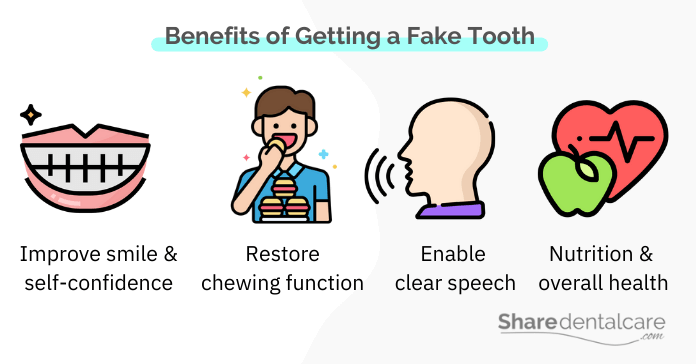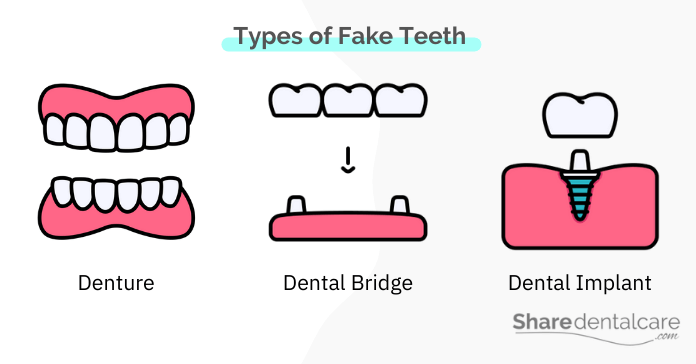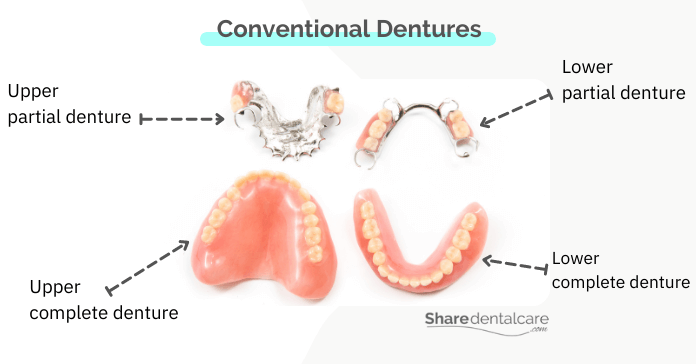Getting a fake tooth means getting your smile back. A fake tooth is a dental appliance that replaces missing teeth and provides the function and appearance of natural teeth. Missing teeth can have a big impact on your appearance and overall health. Your teeth help you to chew and speak properly. Also, they give you a beautiful smile that can help you get a job or impress someone while talking to them. Some people don’t smile at all if they have missing teeth because they are embarrassed by their smile. It’s important to get a fake tooth if you lost your natural teeth because it can help eat, talk, and get your confidence back.
What Are Fake Teeth?
The fake tooth is a term that people use to describe a tooth that is not natural. Fake teeth are an appliance that replaces missing teeth and restores their function and appearance. There are several types of fake teeth available, including dentures, bridges, and implants. All of these can be made of different materials like porcelain, resin, plastic, gold, or alloys. Before getting a fake tooth, it’s important to know all the types and their benefits.

Benefits of Getting a Fake Tooth
- Aesthetics: Getting a fake tooth means getting your smile back. Dental prostheses can improve the aesthetics of your mouth because it provides you with natural-looking teeth and replaces missing teeth.
- Speech: it’s important to talk with confidence because fake teeth enable clear speech.
- Chewing: getting a fake tooth means getting back to your eating habits. Moreover, dental prostheses can make you enjoy the foods more and chew them better.
- Self-confidence: fake teeth can help you gain your self-confidence back. If you are missing teeth, getting them replaced will make you feel better about yourself and improve the way you look at yourself.
- Improve overall health: getting a fake tooth not only improves your social life, but it also improves your overall health because it improves your eating habits and nutrition.
Know The Types Before Getting A Fake tooth
Before getting a fake tooth, it’s important to know all the types and their benefits. Types of fake teeth include conventional dentures, dental bridges, and implants. Read more about types of tooth replacement.

Conventional dentures
Conventional dentures are removable prostheses. They are usually made of an acrylic base with artificial teeth. Conventional dentures can be complete or partial. Complete dentures are for adults with no teeth, while partial dentures are for replacing a few missing teeth, for example, partial dentures for molars.
- Pros of dentures: they are relatively inexpensive in comparison with other types of tooth replacement. They are easy to remove, store, and clean up.
- Cons of dentures: they don’t feel very comfortable, so getting used to them may take time. The gums may become sore after using them. Dentures can last for 5 to 7 years and some for even longer.

Dental bridges
Dental bridges are fixed prostheses. They are consist of 2 crowns and a fake tooth in between. Bridges are usually made from porcelain or zirconia. Learn more about the fake tooth bridge.
- Pros of dental bridges: they are fixed, durable, and look natural. They anchor the prosthesis to your natural teeth, which allow biting and chewing. Dental bridges can last for more than 20 years.
- Cons of dental bridges: they are expensive in comparison with dentures. Bridges require anesthesia and preparation of the neighboring sound teeth. They can be difficult to clean.

Dental implants
Dental implants are artificial roots that provide support for artificial crowns, bridges, or dentures.
- Pros of implants: they are the most durable replacement for missing teeth. They provide a natural appearance and can last for years. Implants improve your chewing and speaking ability. They can give you self-confidence back and increase your quality of life.
- Cons of implants: The process is more expensive than getting a dental bridge. The placement of implants requires a surgical procedure.
How Getting a Fake Tooth Works?
If you have a missing tooth, getting a fake tooth allows you to chew your food and speak properly. It may be either fixed or removable. Fixed prostheses are made by your dentist from porcelain, metal, acrylic resin, or other material and cemented into position. Removable prostheses are loose-fitting appliances, which can be taken out when not required for eating or brushing.
Your dentist will evaluate the condition of your mouth and check the number of missing teeth. The procedures of getting a fake tooth include taking impressions of the teeth, X-rays (to check the jaw bone), and getting a cast of your mouth. After that, you can get the work done on your fake tooth.
Your dentist or oral surgeon will plan the treatment, discuss the steps of the procedure with you, and give you post-operative instructions. Getting a fake tooth may require multiple visits to the dentist.
Factors Need To Be Considered Before Getting A Fake Tooth
Several factors need to be considered before choosing a dental prosthesis:
- Number & location of missing teeth: bridges are not suitable if you don’t have posterior teeth for support. Find out if a removable denture or fixed bridge for one missing tooth is suitable for you.
- Material: dental bridges are usually made of porcelain-fused-to-metal or zirconia, which are strong and more durable than acrylic dentures.
- Cosmetic appearance: dental implants and bridges give the best natural appearance. Dentures can restore your smile but are not as natural as other types.
- Functionality: dentures are removable, so you may experience some discomfort while eating or talking. Bridges and implants are stable while eating and talking.
- Maintenance: dentures can be easily cleaned outside the mouth. Bridges need special care because food can get easily trapped under or around them.
- Cost: dentures are an affordable treatment option while implants and bridges are more expensive.
Getting A Fake Tooth – Conclusion
Getting a fake tooth can be an excellent way to get your smile back and keep your mouth healthy. Types of fake teeth include dentures, bridges, and implants. Each type has advantages and disadvantages. Dentures are an affordable treatment option but are not as stable or durable as other options. Bridges are stable and durable but require the reduction of adjacent teeth. Implants are the best treatment option but are more expensive and require a surgical procedure.
So, before getting a fake tooth, it is important to know all types available and their benefits. The process may involve multiple visits to the dentist but you’ll have peace knowing that this is something worth doing for yourself. Have a healthy mouth!